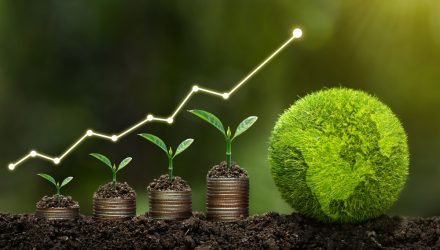Fixed income environmental, social, and governance (ESG) funds are still in their early stages of growth, and that’s encouraging, but some data points indicate that market participants still need to be illuminated on the benefits of the ESG/bond marriage.
Recent research by risk assessment firm Verisk Maplecroft indicates that some professional investors are buying bonds issued by countries with worse ESG profiles than Russia, and that’s saying something. Some of those nations include Angola, Bolivia, Iran, Nigeria, and Venezuela.
In terms of corporate bonds, investors of all stripes have options for accessing the benefits of ESG principles, including the SPDR Bloomberg SASB Corporate Bond ESG Select ETF (RBND). RBND holds 448 bonds, indicating that it possesses a deep bench among ESG bond funds.
As is the case with any exchange traded fund, methodology matters with RBND. That’s even more true at a time when ESG ETFs and mutual funds are on the receiving end of plenty of criticism.
RBND “may be used as an ESG core building block given that it seeks to track an index that is designed to exclude controversies and maximize the R-FactorTM ESG score upon which the benchmark index relies, which is based on the Sustainability Accounting Standards Board (‘SASB’) materiality framework, while also controlling for risk parameters,” according to State Street.
Avoiding controversies is a worthwhile goal because companies that are ESG offenders can reflect that risk at the credit level. Additionally, it’s possible that in the wake of an ESG controversy, an offending company could endure a credit downgrade, punishing bondholders in the process. On a related note, about 55% of RBND’s holdings carry ratings of AAA, AA, or A.
Then there’s growth. While financial markets are riddled with uncertainty, one certainty is the point that more corporate issuers will look to bring more ESG-friendly debt to market in the coming years, potentially driving more interest in funds such as RBND.
“In addition to regulators, business leaders, rating agencies, and other stakeholders continue to debate the meaning of ESG and what characteristics should qualify products to be covered under its positive mantle. Looking specifically at loan and debt markets, global annual sustainable debt issuance (including sustainability-linked bonds and loans and green and social bonds and loans) continues its exponential growth, more than doubling from $769.1 billion for 2020 to $1.689 trillion in 2021, with the largest volume increases in sustainability-linked loans,” according to Reuters.
For more news, information, and strategy, visit the ESG Channel.

